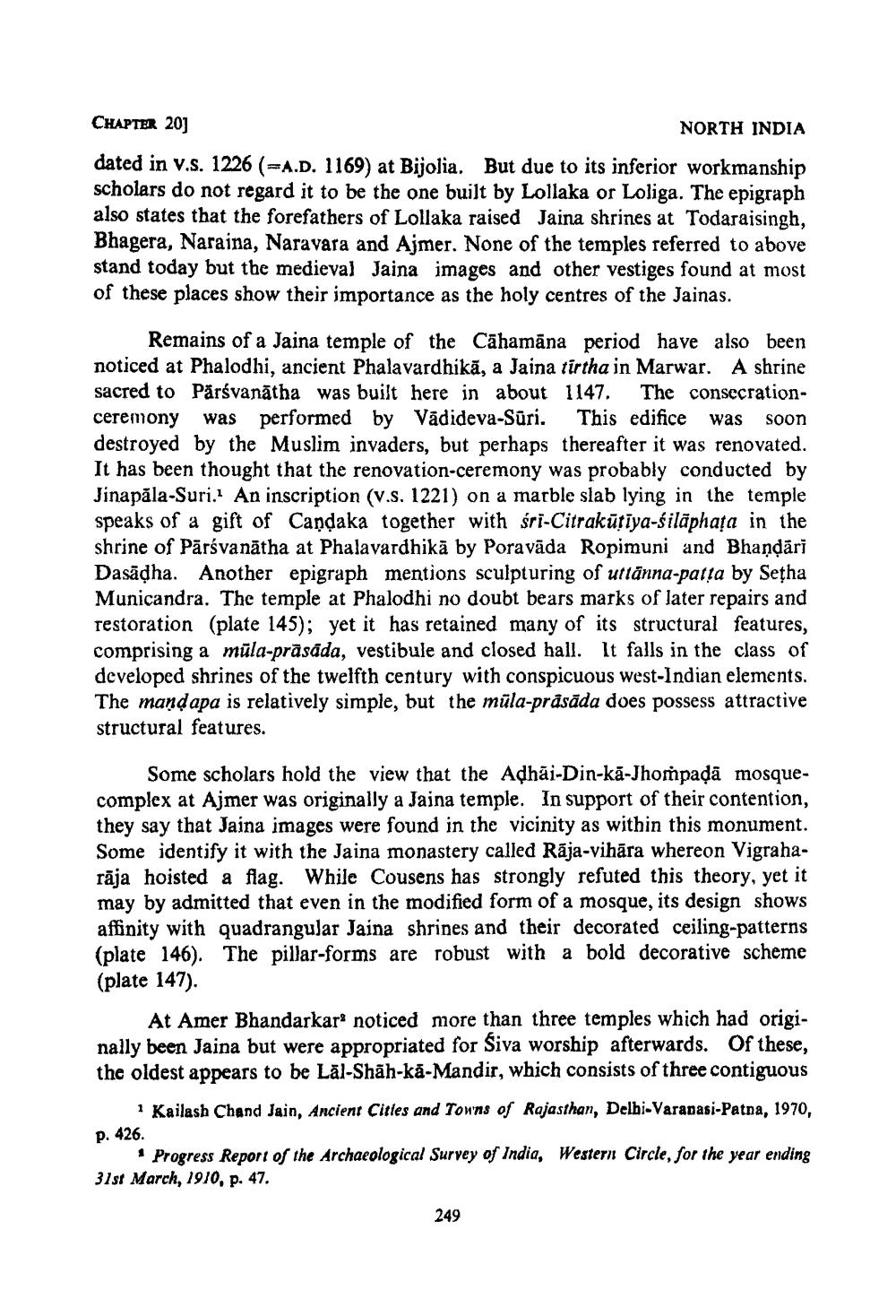________________
CHAPTER 20]
NORTH INDIA
dated in V.s. 1226 (=A.D. 1169) at Bijolia. But due to its inferior workmanship scholars do not regard it to be the one built by Lollaka or Loliga. The epigraph also states that the forefathers of Lollaka raised Jaina shrines at Todaraisingh, Bhagera, Naraina, Naravara and Ajmer. None of the temples referred to above stand today but the medieval Jaina images and other vestiges found at most of these places show their importance as the holy centres of the Jainas.
Remains of a Jaina temple of the Cāhamāna period have also been noticed at Phalodhi, ancient Phalavardhikā, a Jaina tirtha in Marwar. A shrine sacred to Pärsvanātha was built here in about 1147. The consecrationceremony was performed by Vadideva-Sūri. This edifice was soon destroyed by the Muslim invaders, but perhaps thereafter it was renovated. It has been thought that the renovation-ceremony was probably conducted by Jinapăla-Suri. An inscription (v.s. 1221) on a marble slab lying in the temple speaks of a gift of Candaka together with sri-Citrakūtīya-silāphata in the shrine of Pārsvanātha at Phalavardhikā by Poravāda Ropimuni and Bhandari Dasādha. Another epigraph mentions sculpturing of utlanna-patta by Setha Municandra. The temple at Phalodhi no doubt bears marks of later repairs and restoration (plate 145); yet it has retained many of its structural features, comprising a müla-prāsāda, vestibule and closed hall. It falls in the class of developed shrines of the twelfth century with conspicuous west-Indian elements. The mandapa is relatively simple, but the mula-pråsāda does possess attractive structural features.
Some scholars hold the view that the Adhāi-Din-ka-Jhompadã mosquecomplex at Ajmer was originally a Jaina temple. In support of their contention, they say that Jaina images were found in the vicinity as within this monument. Some identify it with the Jaina monastery called Rāja-vihāra whereon Vigraharāja hoisted a flag. While Cousens has strongly refuted this theory, yet it may by admitted that even in the modified form of a mosque, its design shows affinity with quadrangular Jaina shrines and their decorated ceiling-patterns (plate 146). The pillar-forms are robust with a bold decorative scheme (plate 147).
At Amer Bhandarkar' noticed more than three temples which had originally been Jaina but were appropriated for Siva worship afterwards. Of these, the oldest appears to be Läl-Shāh-ka-Mandir, which consists of three contiguous
1 Kailash Chand Jain, Ancient Cities and Towns of Rajasthan, Delhi-Varanasi-Patna, 1970, p. 426.
Progress Report of the Archaeological Survey of India, Western Circle, for the year ending 31st March, 1970, p. 47.
249




